Who doesn’t love a luxurious, skin-loving body butter? Butters and lotions are great because there a whole range of skin-loving ingredients to use. Want a whipped shea body butter, avocado salve or rose water lotion? You got it! This post is a wrap up from a HSCG 2014 session by Marla Bosworth, of Back Porch Soap Co. and Bath & Body University. It’s all about formulating your own luxurious butters and lotions. Happy lotion making! — A.M.
Have you ever wanted to make a luxurious body butter or sugar scrub, but weren’t sure where to begin? Marla Bosworth, of Back Porch Soap Co. and Bath & Body University, presented us with some stellar advice for making scrumptious scrubs & butters. She had her lovely daughter demonstrate the process while she explained the recipes, too!
We learned some great tips for formulating salt and sugar scrubs. For example, Marla reminded us to consider the rinse-off factor of the oils we choose to include in our recipes. Light oils rinse off much easier than a heavy oil or solid butter, and leave skin feeling soft and hydrated, whereas heavier oils will probably leave a greasy layer behind. If you do use a heavier oil (such as coconut or olive oil), blending with some lighter oils is probably a good idea.

We learned that salt scrubs are particularly good for soothing skin prone to ingrown hairs, while sugar scrubs are more gentle on the skin. Marla provided us with a long list of different salts & sugars that are available on the market. It was very inspiring to see how many fun alternatives there are to just using plain table salt or white sugar! Here are some of her recommendations:
Salts:
Sonoma Spa Salt
Icelandic Geo-Thermal Brine Salt
Kosher Salt
Breton Organic Sea Salt
Dead Sea Salt
European Spa Salt
Hawaiian Red Sea Salt
Himalayan Pink Salt

Pink Himalayan Sea Salt is one of my favorite salts to use in scrubs.
Sugars
Brown Sugar
Dark Muscovado Sugar
Light Muscovado Sugar
Natural Cane Sugar
Raw Cane Sugar
White Sugar
Dark sugars have a higher molasses content, and may ferment in sugar scrubs, so it’s a good idea to mix up a test batch, and wait 30 to 60 days to see if there’s any changes before making a large batch. When making facial scrubs, always use a super fine sugar to avoid tearing sensitive facial skin. Putting granulated sugar in a blender or food processor and giving it a few good pulses is a good way to go, or you can buy bakers sugar or “superfine” sugar in some markets.
Marla and her daughter demonstrated one of her recipes for a scrub using white sugar. She used silica gel to emulsify her oils – a great way to help reduce leakage in packaged scrubs! She recommends using about 8% silica gel, but said we could experiment with up to 10%. After mixing a recipe, she also advises to let it sit overnight, because the silica gel will continue to thicken for about 24 hours, and waiting will give you a better idea of the final viscosity.

This sugar scrub is scented with Black Amber & Lavender. It’s one of my favorite scrub recipes!
She recommends using Vegecide at 1% for a preservative. Optiphen would work, as well, but she prefers using the Vegecide, as it’s slightly more natural. Whatever preservative you decide to use in your own recipes, Marla stressed the importance of making sure that you do use one! Even if you’re making products that don’t contain water, the first time a jar of scrub is opened in the shower, it will be exposed not only to moisture, but all sorts of possible bacteria and germs.
I think we all felt the need for some scrumptious butters after spending a bit of time in the drying Arizona heat – I know I did! So when Marla moved on to her body butter recipe, I was ready to learn.
Oil absorption rate is very important – you want to use oils that will absorb quickly, and not feel heavy and greasy. She passed around bottles of Olive Squalane & Abyssinian oil, so we could try a dab, and see how they felt. I’ve never used either oil, so it was exciting to sample some new ingredients. They went on with a light silky feel, and soaked in to leave a soft, powdery finish. A good ratio for obtaining a nice ‘butter’ consistency is about 50% solid oils/butters and 50% oils.
This nourishing Avocado Body Butter is a great recipe for beginners. Watch the full ‘How to Make Whipped Body Butter‘ from Soap Queen on Vimeo.
Another factor when choosing oils is shelf life. The more stable an oil is, the longer it will last without going rancid. Vitamin E or Rosemary Oil Extract are both effective antioxidants that can prevent rancidity when added at about 1% of a recipe. In her recipe, Marla used Cetyl Esters NE for an emulsifier, also at 1%. Beeswax, stearic acid, and E-Wax can also be added at up to 5%, depending on the consistency/melt point you’re after.
Finally, we learned a couple things about scents/essential oils. When adding essential oils to leave-on skincare products, it’s crucial to think about the possibility of side effects, such as photosensitizing. Citrus oils are particularly likely culprits, but it turns out that most steam distilled oils aren’t photosensitizers, compared to cold pressed oils, and can be used more safely. Marla also advised us to add our scents in with our butters and oils, instead of adding at the end, so our beautiful whipped butters don’t deflate.
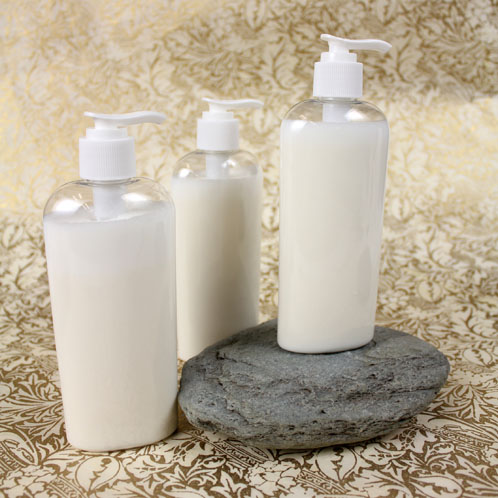
We used essential oils to fragrance the Kissably Soft Lotion Recipe. As a general rule of thumb, we do not recommend using citrus essential oils in leave-on products such as lotions or butters.
Walking away, I felt that body butters and scrubs could be a great way to compliment my soaps and other cosmetic products. Besides the high profit margin, they are diverse, fun to make, and can cater to a wide variety of customers. Marla gave us excellent advice and a masterful lecture, laying a great foundation to a new line of products!

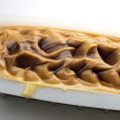
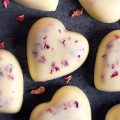
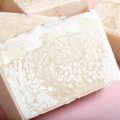
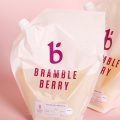
I love experimenting with body butters, although I’m rather new to bath and body products!
I have searched everywhere for ingredients and/or instructions on making the base butters, but I can’t find any info. All I can find are recipes for whipped body butter! I want to make coffee butter and I’ve tried several different ingredients. Does anyone have any info on making the base butter itself?
I’ve tried vegetable shortning, beeswax, soy wax 135, cocoa butter and even a combination.
Either it doesn’t stay solid at room temperature or it’s just not the right consistency. Please help!
Hi Joanna!
We get our coffee butter from a vendor, so I’m not entirely sure how it’s made. Sorry about that! You may see if someone on teachsoap.com/forum know how to make that butter from scratch. 🙂
-Kelsey with Bramble Berry
Coffee butter: https://www.brambleberry.com/Coffee-Butter-P3444.aspx
Thank you, I will check!
It’s not just here, I can’t find this info anywhere lol!
You’re welcome Joanna! 🙂
Hi! I’ve been making body scrubs for a little while now and I find that sometimes my mix( I like using 1:1 of Dead Sea salt and raw sugar) seems like the sugar is reacting with the salt and dissolving! The end result is still pretty coarse, but I notice after a few weeks the consistency changes. Right now I use a fine grain Dead Sea salt with a medium coarse raw sugar in a fractionated coconut oil base. What are your recomendations and also what would you recommend as a preservative?
Hi Katelyn!
How are you storing the scrub? If it’s stored in the shower, it may be the heat and humidity! The salt and sugar can absorb moisture from the air and change consistency slightly. Let me know how that scrub is stored and I’ll help you troubleshoot. 🙂
Also, Phenonip or Optiphen would work well as preservatives for scrub. They both help protect against mold and bacteria well. You can add them at .5-1% in the recipe. Read more about preservatives here: http://www.soapqueen.com/bath-and-body-tutorials/lotion/talk-it-out-tuesday-preservatives/
-Kelsey with Bramble Berry
Phenonip: https://www.brambleberry.com/Phenonip-P4038.aspx
Optiphen: https://www.brambleberry.com/Optiphen-P3682.aspx
I recently made a facial wash with castile soap, glycerin, and some triglycerides and lavender. Would
Optiphen work as a preservative. Its mostly soap.. would that count as an oil? Or is castile soap considered hydrous. I know that optiphen works for anhydrous products.
Hi Patricia!
With that mixture, a preservative isn’t required! Soap has a pH level that doesn’t allow mold to grow, and there isn’t any additional water in the recipe. If the facial wash will be stored in a very wet/humid environment, or if you plan to give it away or sell it, you can add a preservative to be on the extra safe side. I would recommend adding Optiphen at .5%. 🙂
Read more about preservatives here: http://www.soapqueen.com/bath-and-body-tutorials/tips-and-tricks/fragrance-oil-blending-tips/
-Kelsey with Bramble Berry
I want to make a white sugar scrub with shea butter, glycerine and liquid soap. Will the sugar disolve over time or if water is introduced to the jar? How long will the original texture last?
Hi Fiona!
If your scrub is heated up, or if a lot of water gets in, the sugar can dissolve.
However, we’ve had sugar scrubs in this office for 6 months or more than are still nice and scrubby. 🙂
-Kelsey with Bramble Berry
I’m a total newbie, so sorry for this question. When you say 8% silica and 1% Vegecide, how much is that exactly
Hi Jo!
That depends on your recipe! When we say 1% of your recipe, that means it should make up 1% of the total weight. So for instance, if your recipe was 100 oz., you would add 1 oz.
I’ll include a link to a blog about soapy math. It’s very helpful!
-Kelsey with Bramble Berry
Soapy Math: http://www.soapqueen.com/bath-and-body-tutorials/tips-and-tricks/math-soapers/
I have tried several body butters but they all seem to leave me feeling greasy. I would LOVE to find a body butter (without a million ingredients) that doesn’t leave a greasy feeling. Any suggestions?
Thanks so much!
Hi Laura!
The majority of body butters are 100% oils, which will feel a little oily on the skin for a certain amount of time, until they absorb :). I have found that exfoliating my skin before applying a butter helps a lot! Another option, is to use Tapioca Powder in your body butter, this helps to cut back on the greasy feel. You can see an example of this in the Whipped Body Butter Tutorial 🙂
How to Make Whipped Body Butter:
http://www.soapqueen.com/bath-and-body-tutorials/lotion/how-to-make-whipped-body-butter-on-soap-queen-tv/
-Amanda with Bramble Berry
I am a newbie at this as well. I was surfing the internet and came across this easy recipe (whipped body butter. And I am loving it. I used cornstarch instead of tapioca and the fragrance oil I used was Apricot. Yummy…. Can’t wait to try the melt and pour soap. What can I say I’m hooked.
Teri
Hi Teri!
That sounds like an awesome recipe! I love the fluffiness of whipped body butters. 🙂
Melt and pour soap is a lot of fun! We have some great resources if you’re just getting started, including a four-part video series on how to make it. You can find those resources in the Beginning Soaper Resource Roundup: http://www.soapqueen.com/bramble-berry-news/beginning-soaper-resource-roundup/
-Kelsey with Bramble Berry
Wow – great article! I’m intrigued by Vegecide – I will need to look into that!
I am still a little confused about preservatives though (yup, even after reading all the other great posts on this blog regarding this topic). I want to make a salt body scrub with liquid castile soap (and other ingredients like clay, oils, butters, etc.). I bought Optiphen Plus but now I’m wondering if I should have bought Phenonip. Thoughts?
~Evie
Hi Evie!
Technically, because your scrub does not contain water, you do not need to use a preservative. This recipe is also made with soap, and soap does not require a preservative because the pH level does not allow bacteria to grow. Phenonip is a great preservative because it works for all creations, both water and oil based. If you’d like to be extra cautious and add preservative, Phenonip could be used. Optiphen Plus is recommended for water soluble products, and because the majority of your recipe is oils, it may not mix well. But, you could try making a small test batch first, adding some to your liquid soap base and see how it works for you 🙂
I hope this helps! If you have any questions, let me know!
-Amanda with Bramble Berry
Hi Amanda! Thanks for the reply! The liquid soap does contain water AND I know that water will get into this product when it’s used (either in the shower, by the sink or by a wet hand in the jar), which is why I think I need a preservative (better to be on the safe side in my opinion). I will try out the Optiphen Plus and will report back the results. Whether I use Optiphen Plus or Phenonip, can I still call the end result “100% natural”??
~Evie
Hi Evie!
While soap does contain water, once it goes through the saponification process, it becomes something completely different! Being extra cautious never hurts though! Definitely let me know how it works for you. Preservatives are not considered natural, so personally, I would not call the end result 100% natural. That being said, the term natural is not regulated, and means something different to everybody. You may find the blog post, “Natural vs. Organic” interesting!
Natural vs. Organic: http://www.soapqueen.com/bath-and-body-tutorials/tips-and-tricks/natural-vs-organic/
-Amanda with Bramble Berry
Great job summarizing the session, Jodi!
I’m glad you enjoyed this wrap up Jean! 🙂
-Amanda with Bramble Berry